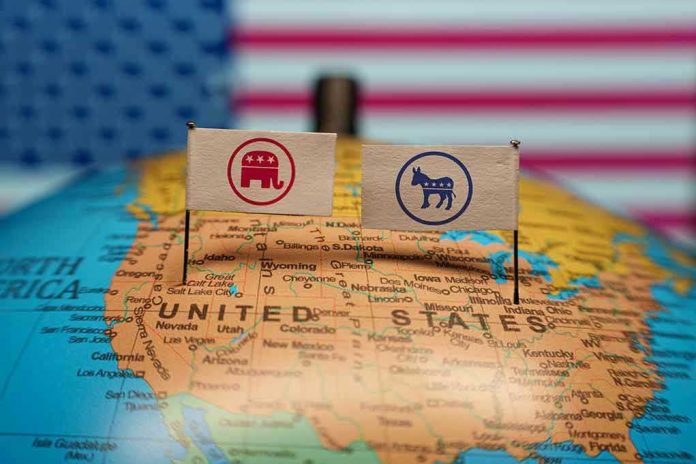
What if the fate of minority representation in Congress—and the very survival of the Voting Rights Act—hinged on one Supreme Court case from Louisiana?
Story Snapshot
- The Supreme Court’s reargument of Louisiana v. Callais could dramatically alter how race is considered in redistricting.
- The 2026 midterm elections may be decided by a congressional map whose legality is in limbo.
- The case pits the Voting Rights Act against the Constitution’s Equal Protection Clause—testing the limits of both.
- The outcome will set precedent for minority representation and future redistricting battles nationwide.
Supreme Court’s Unprecedented Move Signals Trouble for Redistricting Norms
The Supreme Court’s decision to order a reargument in Louisiana v. Callais is rare and telling. Rearguments only happen when justices disagree sharply or need clarity on questions that could fundamentally shift legal doctrine. Here, the Court wants lawyers to dig deep into whether the intentional creation of a second majority-Black district—meant to remedy Voting Rights Act violations—actually crosses the constitutional line. Such a move is like resetting the rules of the game while the players are still on the field, with every state legislature, civil rights group, and political operative watching closely.
The stakes couldn’t be higher. Louisiana’s population is about one-third Black, but its original map only allowed for one majority-Black district. Federal courts found that this likely violated Section 2 of the VRA, which is supposed to ensure minority voters can truly elect candidates of their choice. The legislature’s fix—Senate Bill 8—added a second majority-Black district, but opponents claim the remedy goes too far, prioritizing race over neutral principles and creating what they call unconstitutional racial gerrymandering. The Supreme Court’s reargument in October 2025 will determine if that fix stands or falls.
Historic Legal Tensions Come to a Head
Decades of legal wrangling set the stage for this showdown. The Voting Rights Act, especially Section 2, was designed to counteract the kind of systemic exclusion Black voters faced in Louisiana and other Southern states. Recent federal rulings, including Robinson v. Landry, affirmed the need for a second majority-Black district to comply with the VRA. Meanwhile, the Supreme Court’s Allen v. Milligan decision in Alabama upheld Section 2 but didn’t resolve how far states can go in race-conscious districting. Now, Louisiana v. Callais puts those unresolved questions front and center, asking whether a remedy for past discrimination can itself violate constitutional protections against racial bias.
The tension is palpable: if the Supreme Court sides with Louisiana officials who claim the remedial map is unconstitutional, it could restrict the use of race in redistricting across the nation. If the Court upholds the map, it reaffirms the VRA’s role as a bulwark against racial vote dilution, but risks accusations of judicially sanctioned racial sorting. The justices’ deliberations are likely to be as much about political philosophy and the meaning of equality as about legal technicalities.
Stakeholders Brace for a Precedent-Shattering Verdict
The cast of characters in this drama is broad, and the power dynamics are fraught. The Louisiana legislature wants to protect its political interests while avoiding federal sanctions. Civil rights organizations, led by the NAACP Legal Defense Fund, argue that Black voters deserve real representation, not token districts. The Supreme Court justices face pressure to clarify the boundaries of race-conscious legislation without undermining decades of progress on minority voting rights.
Political parties on both sides understand that the outcome will affect not only Louisiana, but the whole country’s congressional balance. The ruling may tip the scales in the 2026 midterms, influencing control of the U.S. House of Representatives. Meanwhile, Black communities in Louisiana are watching to see if their hard-won right to fair representation is upheld or eroded by judicial decree.
Ripple Effects: Beyond Louisiana’s Borders
The implications go far beyond the Pelican State. States with significant minority populations and contested maps—think Georgia, Texas, North Carolina—could see lawsuits, new legislation, and major shifts in redistricting strategy depending on the Supreme Court’s decision. Election law scholars note that a ruling against the remedial map might make it nearly impossible to use race as a remedy for historical discrimination, effectively gutting the VRA. A ruling upholding the map could encourage more aggressive race-based remedies, but provoke backlash and further litigation.
Public trust in elections and perceptions of racial equity are on the line. If the Supreme Court is seen as retreating from protections for minority voters, expect a new wave of activism, legal challenges, and political mobilization. If the Court draws a clear constitutional boundary, state legislatures will scramble to adjust their maps ahead of future elections. Either way, the case will shape the rules of democracy for years to come—and every American with an interest in fair representation should be watching.
Sources:
NAACP Legal Defense Fund, “Louisiana v. Callais – Legal Defense Fund”












